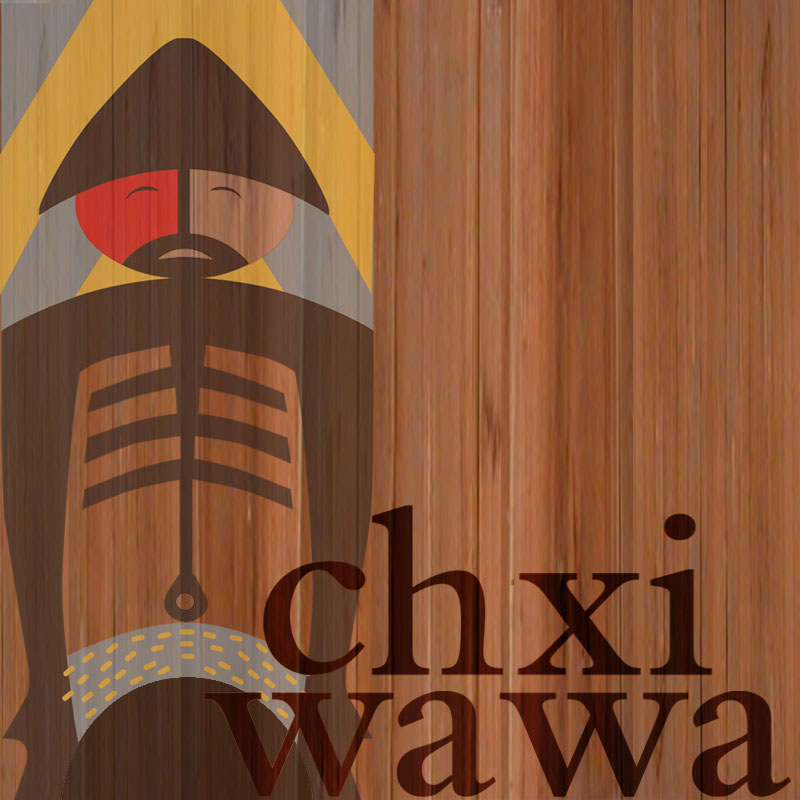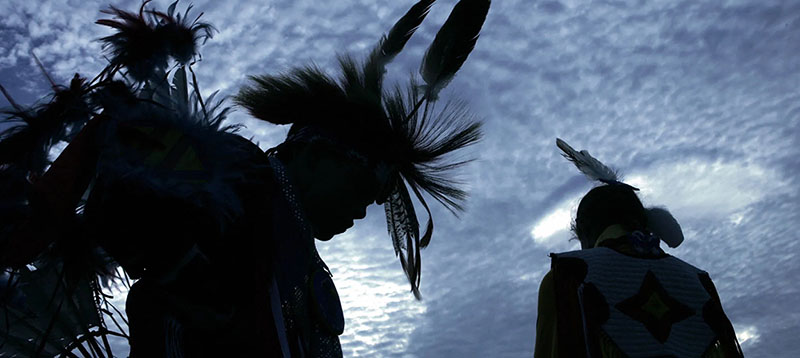By Sophie Hayssen | Teen Vogue | November 24, 2021
There are almost 400 unrecognized tribes in the U.S.
The Winnemem Wintu tribe of California say they are on the verge of an “ethnocide.” A plan to raise the nearby Shasta Dam would flood the few sacred sites they have left, and drastically impact the local salmon population, which, as a keystone species, is responsible for maintaining the region’s ecology.
The salmon population was already hurt by the Shasta Dam’s creation in the 1940s. Winnemem cultural preservation officer Michael Preston explains to Teen Vogue that in Winnemem mythology, salmon gave humans the ability to speak and find purpose.
In one tribal meeting, Chief Caleen Sisk put it simply: “Loss of life at our traditional places means a loss of the Winnemem Wintu.”
The Winnemem have spoken at public meetings, run prayer circles, and, since 2016, annually retraced the salmon’s 300-mile migration in an event called Run4Salmon. But the Winnemem claim the U.S. government is handicapping their conservation efforts by refusing to recognize them as a Native tribe.
Being federally recognized means the U.S. government engages with a tribe in a government-to-government relationship, granting tribes sovereignty and access to resources such as federal funds. The Winnemem are not the only tribe who lack this status. In 2012, the Government Accountability Office counted around 400 unrecognized tribes in the U.S.
Federal recognition may be an asset, but the process to acquire it is far from smooth. Ironically, the process means tribes must seek approval for recognition from the United States, a nation founded on Indigenous genocide. Tribes can gain federal recognition by taking their case to court, receiving a presidential executive order, petitioning the Bureau of Indian Affairs (BIA), or through an act of Congress.
Tribal attorney Nicole Johnson confirms for Teen Vogue that, no matter the route, it’s rare for a tribe to receive federal recognition. She adds that the money and influence required to lobby, pay lawyers, and collect data on genealogy makes the process difficult for poorer, disenfranchised tribes.
For some tribes, the fight for recognition has spanned generations. The Muscogee Nation of Florida has been fighting since the 1950s, and currently has a petition pending with the BIA. Chairwoman Ann Denson Tucker tells Teen Vogue that her tribe decided to go through the BIA to avoid answering to outside interests in Congress. Tucker cites poor communication from federal officials as a major issue in the process. After submitting her initial petition to BIA in the 1990s, she recalls being told the rules had changed and she needed to start over.
In 2015, the BIA amended its criteria to make recognition more timely and transparent. In addition to submitting paperwork, including membership lists and “governing documents,” tribes must prove they exist as a “distinct community” and have been identified as Indian on a “continuous basis” since 1900. Prior to 2015, Johnson says, tribes had to prove their existence from colonial contact forward.
The Muscogee still don’t know when their case will be decided, but it could be one of the first to be decided using these new criteria. “I don’t know until I get this back and see where we actually stand on what we’re dealing with,” Tucker says. “It is my hope that the system is better.”
A common critique of the process is that it’s too general, failing to reckon with the different ways colonialism has impacted Native tribes. Also, the process rests on the U.S. government’s troubled relationship with Native Americans and policies born of anti-Indigenous racism.
Tucker expresses frustration that guidelines don’t account for her tribe’s history of erasure, including attempts by the government to forcibly remove Indians and send them West. During Jim Crow, the Muscogee say, “Indian” as a racial category disappeared, creating a “documentary void” of their Native heritage.
“Indians are not little square pegs that fit in little square holes,” Tucker explains. “You have experiences that got you to the same place, but didn’t happen the same way [or] for the same reasons. Each tribe should be looked at independently.”
North Carolina’s Lumbee Tribe has also fallen through the system’s cracks. With 1956’s Lumbee Act, Congress granted Lumbees partial recognition but refused them any benefits. This law came during America’s Termination Era, when the U.S. government cut ties with tribes, ostensibly to “liberate” them, though many argue the opposite actually happened. Lumbee legal and compliance officer Danielle McLean tells Teen Vogue that the “termination language” used in the Lumbee Act excluded Lumbees from re-petitioning for full recognition, until the Obama administration, in its last days, reversed the policy.
Tribes on the East Coast, like the Lumbee, experienced colonialism earlier than those on the West, leaving many without the documentation to prove their existence. Gregory Richardson, executive director of North Carolina’s Commission of Indian Affairs and a member of the unrecognized Haliwa-Saponi tribe, tells Teen Vogue that recognition should be difficult, because it creates a nation within another nation; however, he’d like to see the federal process expand its definition of evidence to include non-documentary evidence, like enrollment in Indian schools.
“We were taught through storytelling. The elders who were telling those stories were killed off and those stories were not carried forward in history,” Richardson explains. “The BIA requires that we have those stories. You can’t go back and recreate things that were taken away. What we do have is evidence of how those things were taken away from a lot of these folks, but that’s not something that fits within the realm of the BIA’s criteria for federal recognition.”
The Oregon and Washington-based Chinook Indian Nation has been fighting for recognition since 1899. They gained recognition briefly, in 2001, but it was stripped away 18 months later. Rachel Cushman, the tribe’s secretary treasurer, tells Teen Vogue that losing recognition was “horrid,” but emphasizes that recognition doesn’t define tribal identity.
“The point of federal acknowledgment is to be able to fully practice our sovereignty. We’ll continue to be sovereign and Indian without approval,” she says. “But [the] reality is that we have the ability to do more decolonial work if we have that political power.”
Several interviewees describe being caught in a bureaucratic bind. To gain recognition, tribes must maintain their power and community, but without recognition, they are denied essential resources to do that. Unrecognized tribes lack access to COVID relief, educational scholarships, and the ability to operate tribal casinos. Without these rights, tribes have had to innovate: The Lumbees founded the University of North Carolina at Pembroke, originally a college for Native teachers; the Washington-based Snohomish created a nonprofit to fund cultural and family services; Chairwoman Tucker is building an interactive museum for Muscogee culture.
Unfortunately, not all tribes see eye to eye on recognition. Some unrecognized tribes have faced opposition from recognized tribes who question their validity. Snohomish tribal chair Mike Didahalqid Evans discloses to Teen Vogue that because his tribe was unrecognized and lived off a reservation, he has been called a “potato,” implying he was “red on the outside and white on the inside.”
The Lumbee have been in conflict with the Eastern Band of Cherokee for years. The Eastern Cherokee have expressed doubts about whether Lumbees can prove they descend from “any historical tribe,” and even spoke out against a 2020 bill recognizing the Lumbee, which ultimately died in the U.S. Senate.
Mahlea Hunt, a junior at Wake Forest University and former Teen Miss Lumbee, echoes Evans’ sentiment to Teen Vogue. Recalling the times when others questioned her heritage, Hunt stresses the value of her tribal community. “I know how strong our heritage and culture is and how beautiful it is,” she says. “It just hurts that people would question our identity.”
Some have chalked up the Cherokee conflict with the Lumbee to competition for resources. Danielle Hiraldo, a Lumbee and senior researcher at the Native Nations Institute, emphasizes that American politics is designed to encourage Native competition over collaboration. “The system is built perfectly fine in the federal government’s eyes,” she says. “It’s always intended to get rid of the Indian problem, and by fighting amongst one another, it’s doing exactly what it was built for.”
After decades of effort, it is easy to lose hope. Generations have come and gone without ever seeing recognition come to pass. But for some, like Tucker, that just creates more motivation to persevere. “I was tasked [to fight for recognition] by people who are now dead,” she says. “I tell people that when you have a promise to the grave, you go ahead and you finish answering what you said you would do.”
Preston says that, though the Winnemem are not actively petitioning the government, he’s seen renewed interest in tribal culture among young members, particularly with feather work and dancing. The rise in interest aligns with a tribal prophecy that says, around this time, youth will rise up to live more “harmoniously.”
Hunt shares this youth-driven optimism about her tribe’s future. “I feel like I’m so proud of my people. And in 10 years, if we did not receive federal recognition, I would be okay with that,” she concludes. “I know my generation is going to grow and become those tribal leaders. We’re going to be the best leaders that we can be for our tribe and follow in our ancestors’ footsteps.”
Want more from Teen Vogue? Check this out: Celebrating Native American Heritage Month: Dos and Don’ts








